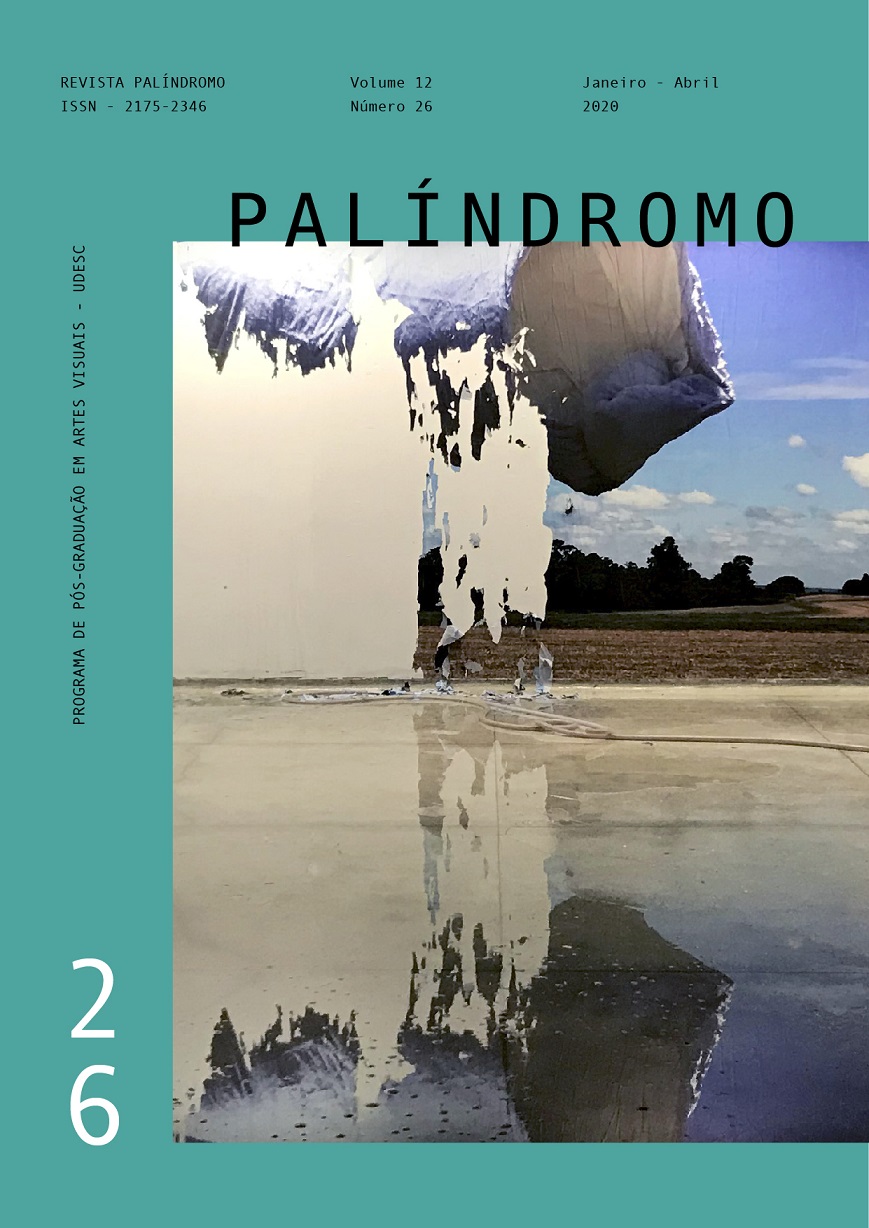Voz alta: polifonias do dizer
DOI :
https://doi.org/10.5965/2175234612262020125Mots-clés :
Rafael Lozano-Hemmer, polifonia, escuta, participaçãoRésumé
Considerando a participação e a experiência social elementos fundamentais para grande parcela da arte contemporânea, o presente artigo elenca a voz, ou ainda, o elemento da fala, do discurso e do relato, como pontos de atualização da tensão artista-obra-público, por meio da análise da instalação VOZ ALTA (2008) do artista Rafael Lozano-Hemmer. É a fala e a escuta, e seus respectivos processos de tradução da linguagem, que configuram as polifonias desta obra sonora diante a problemática latino-americana dos limites – e também, dos poderes - do dizer hoje.
Téléchargements
Références
ÁNGEL, M. A. La región más transparente: Una ciudad hecha de voces en el tiempo. México: Revista Casa Del Tiempo, Universidad Autónoma Metropolitana, 2016, p. 25 – 33.
BACHELARD, G. A poética do espaço. Rio de Janeiro: Editora Eldorado, 1998.
BASSO, E. R; MERINO, A. X. Polifonía no romance La región más transparente (2008) de Carlos Fuentes. Rio Grande do Norte: Revista Colineares, 2015, p. 95 – 120.
CANCLINI, N. G. A Sociedade Sem Relato. Antropologia e Estética da Iminência. São Paulo: Editora EDUSP, 2012.
DELEUZE, G. GUATTARI, F. Mil Platôs. Vol 4. São Paulo: Editora 34, 2012.
FOSTER, H. O retorno do real. São Paulo: Ubu Editora, 2017.
FUENTES, C. La región más transparente. México: Fondo de Cultura Económica, 2008.
GUATTARI, F. ROLNIK, S. Micropolítica. Cartografias do desejo. Rio de Janeiro: Petrópolis, 1996.
LOZANO-HEMMER, Rafael. Voz Alta. Disponível em: <http://www.lozano-hemmer.com/voz_alta.php>
MARQUES, A. Política da imagem, subjetivação e cenas de dissenso. Londrina: Revista Discursos Fotográficos, 2014.
MERLEAU-PONTY, M. Signos. São Paulo: Martins Fontes, 1991.
MCLUHAN, M. Visão, Som e Fúria. Teoria da Cultura de Massa. 7º Ed. Rio de Janeiro: Paz e Terra, 2005.
NEVES, P. Mixagem. O ouvido musical do Brasil. São Paulo: Max Limonad Ltda, 1985.
ORIGEM DA PALAVRA. Disponível em: < https://origemdapalavra.com.br/artigo/dizer/ >
PAZ, O; ADAME, A. G. Octavio Paz En 1968 El Año Axial. Cartas Y Escritos Sobre Los Movimientos Estudiantiles. Ciudad de México: Taurus, 2018.
PONIATOWSKA, E. La Noche de Tlatelolco. Ciudad de México: Ediciones Era, 1971.
RANCIÈRE, J. A partilha do sensível: estética e política. Rio de Janeiro: Editora 34, 2005.
SCHAFER, R. M. A afinação do mundo. São Paulo: Editora Unesp, 2011.
Téléchargements
Publiée
Comment citer
Numéro
Rubrique
Licence
(c) Tous droits réservés Palíndromo 2020

Ce travail est disponible sous la licence Creative Commons Attribution 4.0 International .
DECLARAÇÃO DE DIREITOS AUTORAIS
a. Os artigos publicados pela revista são de uso gratuito, destinados a aplicações acadêmicas e não comerciais. Todos os direitos autorais são atribuídos à revista. Os artigos cujos autores são identificados representam a expressão do ponto de vista de seus autores e não a posição oficial da Revista Palíndromo. O (s) autor (es) compromete-se sempre que publicar material referente ao artigo publicado no Palíndromo mencionar esta publicação da seguinte forma:
Este artigo foi publicado originalmente pela revista Palíndromo em seu volume (coloque o volume), número (coloque o número) no ano de (coloque o ano) e pode ser acessado em: http://www.revistas.udesc.br/index.php/palindromo
b. Plágio, em todas as suas formas, constitui um comportamento antiético de publicação e é inaceitável. A revista Palíndromo utiliza o software iThenticate de controle de similaridade


